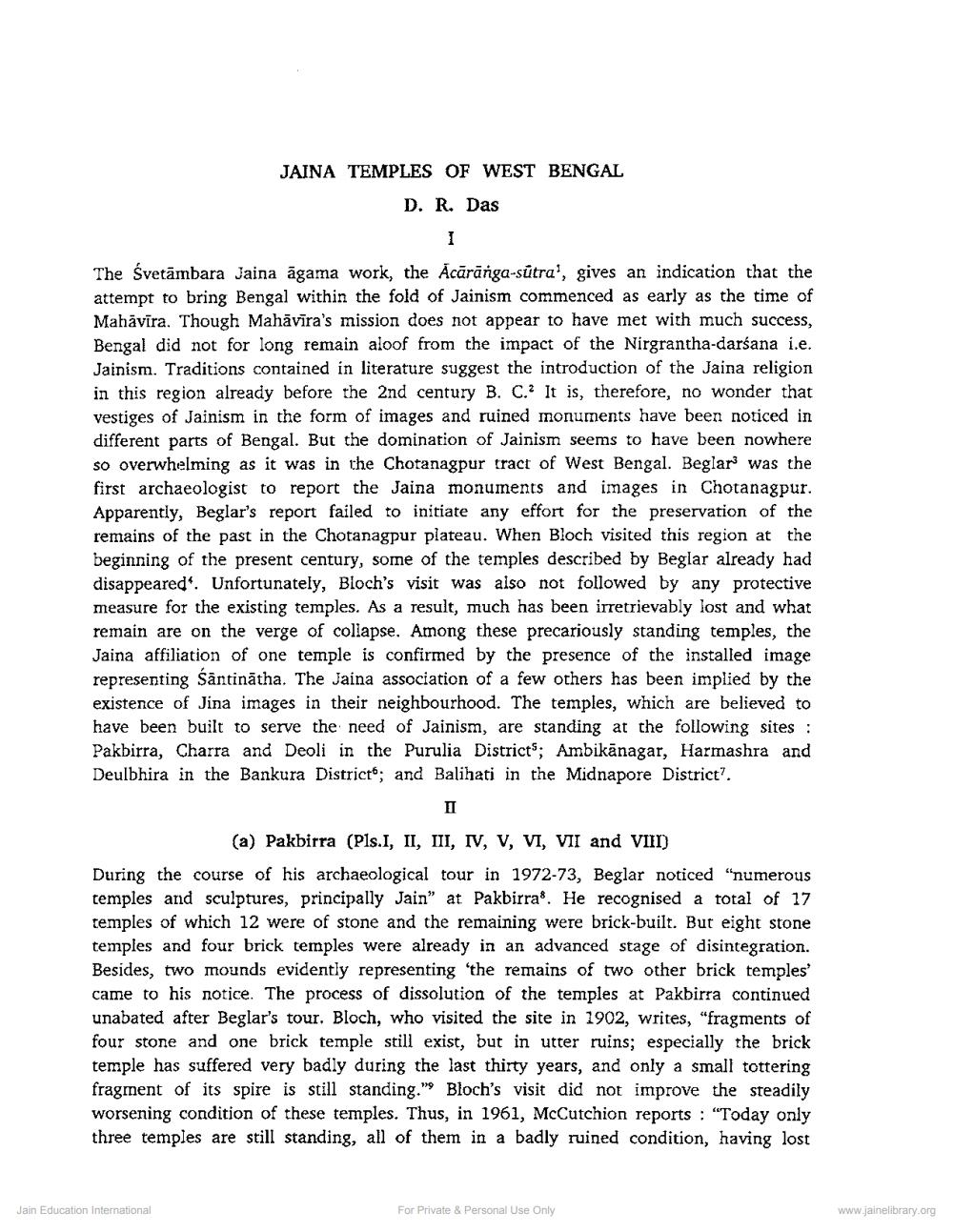________________
JAINA TEMPLES OF WEST BENGAL
D. R. Das
The Śvetāmbara Jaina āgama work, the Acārānga-sútra!, gives an indication that the attempt to bring Bengal within the fold of Jainism commenced as early as the time of Mahāvīra. Though Mahāvīra's mission does not appear to have met with much success, Bengal did not for long remain aloof from the impact of the Nirgrantha-darśana i.e. Jainism. Traditions contained in literature suggest the introduction of the Jaina religion in this region already before the 2nd century B. C.? It is, therefore, no wonder that vestiges of Jainism in the form of images and ruined monuments have been noticed in different parts of Bengal. But the domination of Jainism seems to have been nowhere so overwhelming as it was in the Chotanagpur tract of West Bengal. Beglar3 was the first archaeologist to report the Jaina monuments and images in Chotanagpur. Apparently, Beglar's report failed to initiate any effort for the preservation of the remains of the past in the Chotanagpur plateau. When Bloch visited this region at the beginning of the present century, some of the temples described by Beglar already had disappeared'. Unfortunately, Bloch's visit was also not followed by any protective measure for the existing temples. As a result, much has been irretrievably lost and what remain are on the verge of collapse. Among these precariously standing temples, the Jaina affiliation of one temple is confirmed by the presence of the installed image representing Santinātha. The Jaina association of a few others has been implied by the existence of Jina images in their neighbourhood. The temples, which are believed to have been built to serve the need of Jainism, are standing at the following sites: Pakbirra, Charra and Deoli in the Purulia Districts; Ambikānagar, Harmashra and Deulbhira in the Bankura Districts; and Balihati in the Midnapore District?.
(a) Pakbirra (Pls. I, II, III, V, V, VI, VII and VII) During the course of his archaeological tour in 1972-73, Beglar noticed "numerous temples and sculptures, principally Jain" at Pakbirra. He recognised a total of 17 temples of which 12 were of stone and the remaining were brick-built. But eight stone temples and four brick temples were already in an advanced stage of disintegration. Besides, two mounds evidently representing the remains of two other brick temples came to his notice. The process of dissolution of the temples at Pakbirra continued unabated after Beglar's tour. Bloch, who visited the site in 1902, writes, "fragments of four stone and one brick temple still exist, but in utter ruins; especially the brick temple has suffered very badly during the last thirty years, and only a small tottering fragment of its spire is still standing." Bloch's visit did not improve the steadily worsening condition of these temples. Thus, in 1961, McCutchion reports : "Today only three temples are still standing, all of them in a badly ruined condition, having lost
Jain Education International
For Private & Personal Use Only
www.jainelibrary.org




